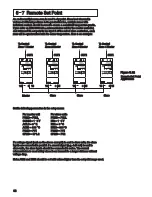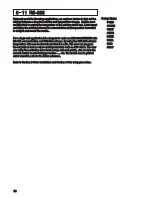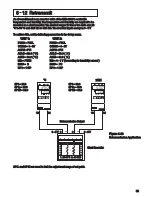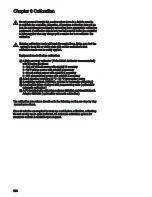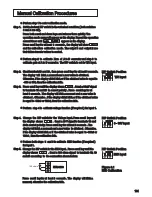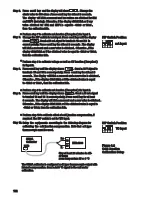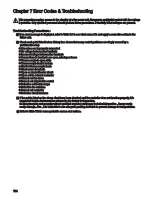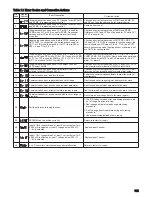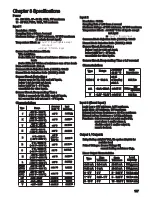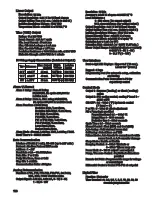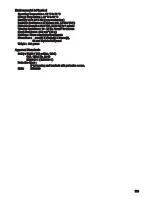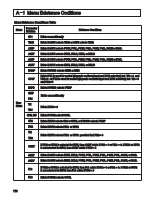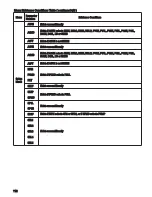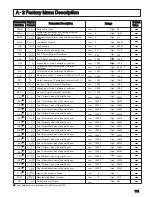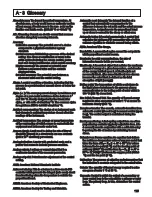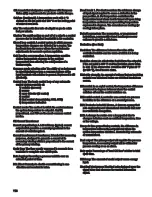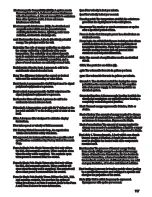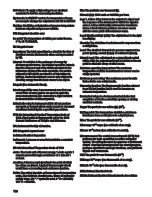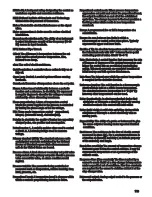
Table 7.2 Common Failure Causes and Corrective Actions
Table 7.2 Common Failure Causes and Corrective Actions
Symptom
Probable Causes
Corrective Actions
1) LED's will not light
- No power to instrument
- Power supply defective
- LED display or LED lamp defective
- Related LED driver defective
- Check power line connections
- Replace power supply board
- Replace LED display or LED lamp
- Replace the related transistor or IC chip
2) Some segments of the display or
LED lamps not lit or lit erroneously.
3) Display Unstable
4) Considerable error in temperature
indication
5) Display goes in reverse direction
( counts down scale as process warms )
- Analog portion or A-D converter defective
- Thermocouple, RTD or sensor defective
- Intermittent connection of sensor wiring
- Replace related components or board
- Check thermocouple, RTD or sensor
- Check sensor wiring connections
- Wrong sensor or thermocouple type, wrong
input mode selected.
- Analog portion of A-D converter defective
- Check sensor or thermocouple type and if
proper input mode was selected
- Replace related components or board
- Reversed input wiring of sensor
- Check and correct
6) No heat or output
- No heater power ( output ), incorrect output
device used
- Output device defective
- Open fuse outside of the instrument
- Check output wiring and output device
- Replace output device
- Replace output fuse
7) Heat or output stays on but indicator
reads normal
- Output device shorted, or power service
shorted
- Check and replace
8) Control abnormal or operation incorrect
- CPU or EEPROM ( non-volatile memory )
defective. Key switch defective
- Incorrect setup values
- Check and replace
- Read the setup procedure carefully
9) Display blinks; entered values change
by themselves
- Electromagnetic interference ( EMI ), or
Radio Frequency interference ( RFI )
- EEPROM defective
- Suppress arcing contacts in system to
eliminate high voltage spike sources.
Separate sensor and controller wiring from
" dirty " power lines, ground heaters
- Replace EEPROM
106

